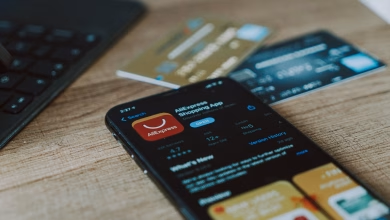When Did UX Design Become Popular?

What makes a user keep coming back to your product? How do you design a product that looks great and feels just right? These questions are at the heart of user interface (UI) and user experience (UX)—where creativity meets empathy.
The best UX/UI tools offer a structured framework for organizing data, mapping the user journey, and bringing your design concepts to life. But remember, it’s not about having every platform in your tech stack—it’s about finding the ones which best serve your specific needs and complement your existing workflow.
Whether you’re building an intuitive website or working on a must-have invention, understanding when UX design truly gained momentum helps clarify why it plays such a pivotal role today.
The Early Ideas Before UX Had a Name
UX, in its essence, is not a new concept. Even before it was named, it was practiced. If you look back to the days of early industrial design and ergonomics in the 20th century, you’ll find a shared mission: to make tools, machines, and interfaces easier and more intuitive to use.
As computers began appearing in workplaces and homes in the 1980s, the need to simplify digital interactions grew significantly. But at that time, user experience as a field had no unified identity. Most work focused on usability—how efficiently someone could complete a task—without accounting for emotion, satisfaction, or engagement.
The 1990s: UX Gets a Name—and a Voice
The term “user experience” came into mainstream conversation in the 1990s, thanks to Don Norman, who was then working at Apple. He coined the term because he felt “human interface” or “usability” didn’t fully capture the scope of what designers and developers were working on.
Apple’s design-forward mindset and Norman’s advocacy gave UX a foundation and made people start paying attention. UX design was no longer just about function—it was about how a user feels when engaging with a product. That perspective would go on to change everything.
The 2000s: UX Becomes a Business Priority
By the early 2000s, the tech world had exploded. Websites, mobile phones, and online platforms were no longer just helpful—they were central to how we lived, worked, and connected. But many digital products were frustrating and confusing. Companies began to realize that no matter how advanced the back-end technology, poor design meant users would leave.
This shift marked the beginning of UX’s popularity as both a discipline and a business differentiator. Startups and established companies alike began hiring specialists. Dedicated UX teams emerged. Usability testing, journey mapping, and interface prototyping became standard practices.
In time, working with skilled London UX design experts another tech hub became a key move for companies wanting to stand out.
The 2010s: UX Design Enters the Spotlight
Throughout the 2010s, UX matured rapidly. Tools like Sketch, Figma, and Adobe XD empowered designers to build faster, collaborate better, and test more effectively. Meanwhile, users’ expectations kept rising. Seamless experiences weren’t a luxury—they were the baseline.
Tech giants like Google, Airbnb, and Spotify became household names in part because of their intuitive, clean, and delightfully simple user experiences. And as mobile devices became ubiquitous, UX design took on even greater importance. A product’s success was now inseparable from its design.
The job title “UX designer” began appearing everywhere—from agencies to Fortune 500s. Bootcamps, degree programs, and online certifications proliferated, making UX one of the most in-demand tech careers of the decade.
Today and Beyond: UX as a Strategic Asset
In today’s world, UX design is far more than a trendy label. It’s a core part of how businesses think, build, and grow. From onboarding flows and checkout screens to app animations and customer feedback loops, UX is woven through every digital touchpoint.
As new technologies like voice UI, AI, and augmented reality become mainstream, UX is evolving yet again. Designers are now tasked not just with creating interfaces, but with shaping experiences that feel human—even when powered by machines.
What started as a behind-the-scenes effort to make systems usable has become a strategic force driving loyalty, retention, and growth.
Conclusion
So, when did UX design become popular? While its origins date back decades, UX truly stepped into the spotlight in the early 2000s as the digital world expanded and user expectations soared. It matured in the 2010s, proving itself indispensable across industries, and today, it stands as a strategic pillar for product success.
For businesses, founders, and creators, investing in great user experience is no longer optional. It’s the difference between a product that’s merely functional and one that people love.



